| Benefit | Why It Matters for Restaurants |
|---|---|
| Superior Durability | Withstands intense commercial kitchen use for decades |
| Exceptional Heat Retention | Maintains consistent cooking temperatures during busy service |
| Cost-Effective | One-time investment with 5-10× longer lifespan than other cookware |
| Natural Non-Stick Surface | Chemical-free cooking surface that improves with use |
| Market Growth | Commercial segment holds 61% market share (2023) |
Introduction to Seasoned Cast Iron in Restaurants
Seasoned cast iron cookware has become a cornerstone in professional kitchens worldwide. This restaurant-grade equipment is created through a specialized process where layers of oil or fat are baked into the iron’s surface, creating a natural, durable cooking surface. For busy commercial kitchens looking for equipment that stands the test of time, seasoned cast iron cookware offers unmatched performance.
The global cast iron cookware market is projected to reach $3.07 billion by 2029, with the commercial segment already commanding 61% of the market share. This remarkable growth confirms what professional chefs have known for generations—seasoned cast iron delivers exceptional value in demanding restaurant environments.
“We’ve been using the same set of cast iron pans in our kitchen for over 15 years. They perform better today than when we first purchased them,” notes Chef Michael Rodriguez of The Iron Skillet Restaurant.
Let’s explore why seasoned cast iron has earned its place in commercial kitchens and why it continues to be the preferred choice for restaurants seeking quality, durability, and performance.
Top Benefits of Seasoned Cast Iron for Commercial Kitchens
Restaurant owners and chefs choose seasoned cast iron for numerous practical reasons that directly impact their bottom line and food quality:
- Unmatched Durability: Withstands decades of commercial use with minimal degradation
- Superior Heat Distribution: Eliminates hot spots for consistent cooking results
- Versatility Across Cooking Methods: From stovetop to oven to tableside service
- Chemical-Free Cooking Surface: A natural non-stick surface that improves with use
- Enhanced Food Flavor: Develops a unique seasoning that enhances dish profiles
The commercial segment of the cast iron market continues to grow at a CAGR of 5.1%, outpacing many other cookware segments. This trend reflects the practical advantages that make seasoned cast iron an excellent investment for restaurants of all sizes.
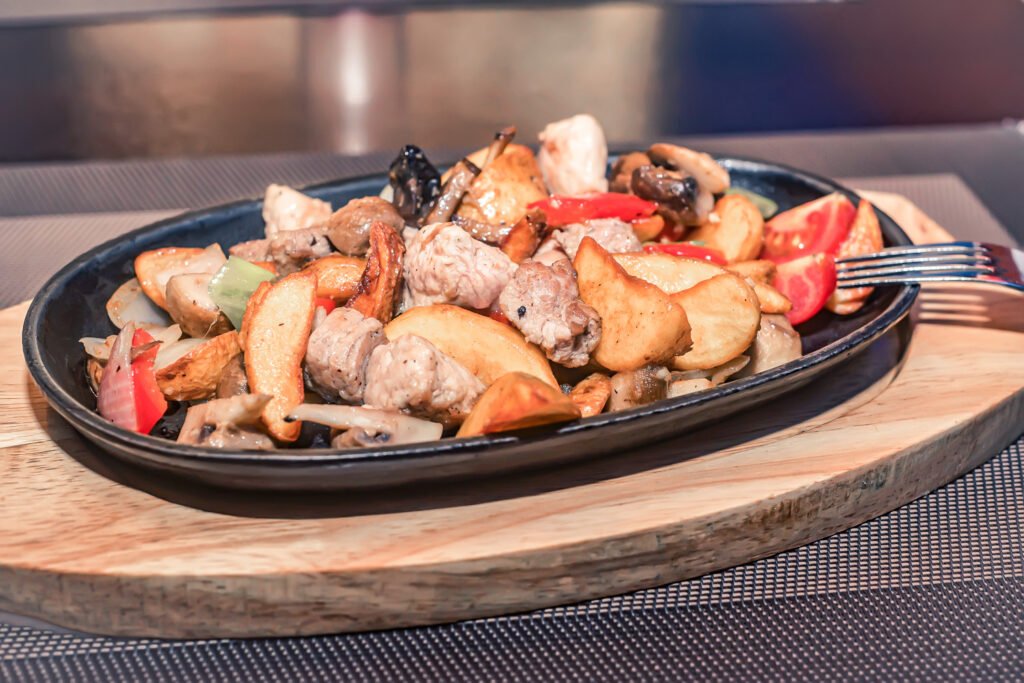
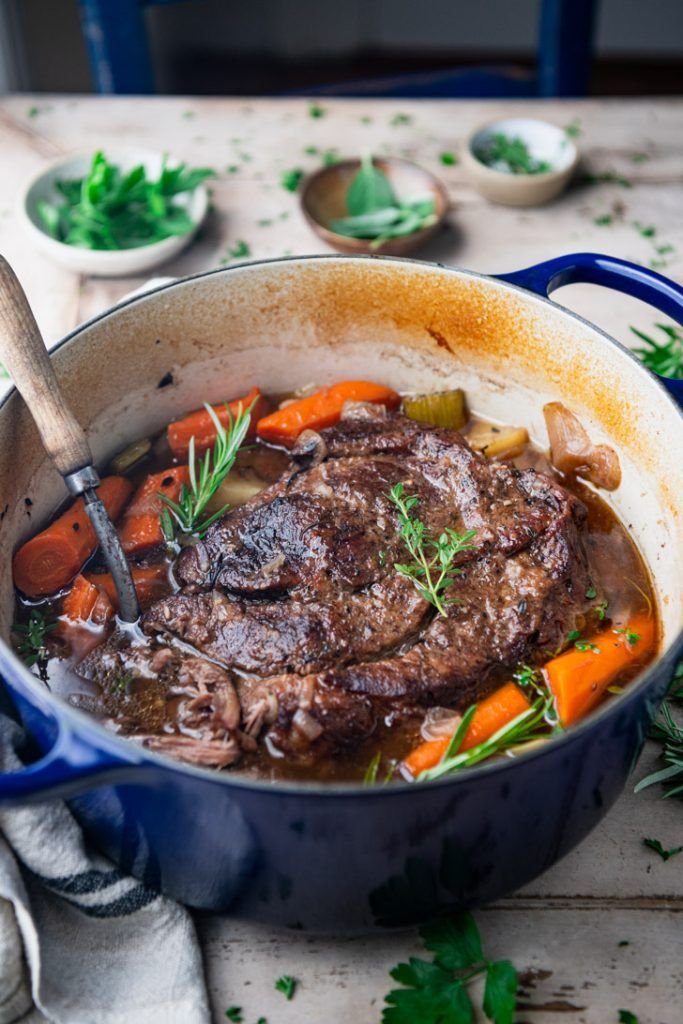
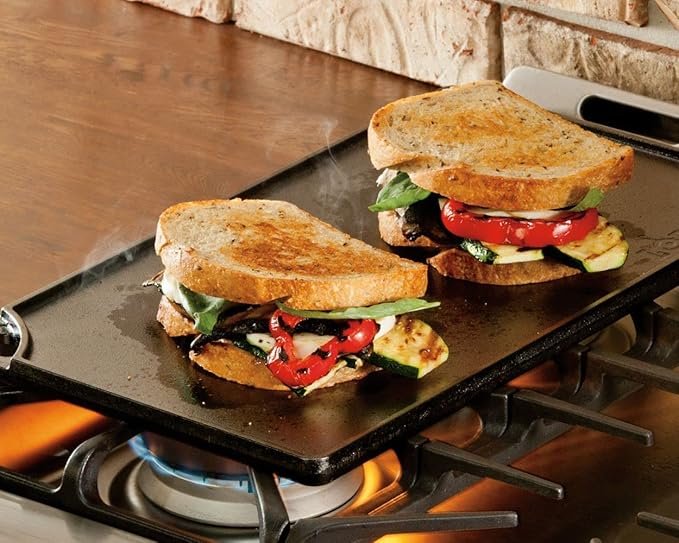
Durability and Heat Retention: Why Chefs Choose Cast Iron
In the high-pressure environment of restaurant kitchens, equipment must withstand continuous use under extreme conditions. Seasoned cast iron excels in this area for two main reasons:
Exceptional Durability
Unlike typical commercial cookware that may need replacement every 1-2 years, properly maintained cast iron can last for decades or even generations. This remarkable longevity stems from its solid construction with fewer weak points compared to multi-layered cookware.
Even in the most demanding commercial settings, cast iron frying pans resist warping, handle degradation, and surface damage that plague other materials. The seasoning layer actually improves with use, creating an increasingly non-stick cooking surface over time.
Superior Heat Retention
Perhaps the most valued quality for busy restaurant service is cast iron’s exceptional heat retention. Once heated, it maintains consistent cooking temperatures far longer than aluminum or stainless steel alternatives. This means:
- Less temperature fluctuation when adding cold ingredients
- More consistent cooking results during busy service periods
- Reduced energy consumption for maintaining cooking temperatures
- Perfect searing capabilities for steaks and other proteins
According to a study by the National Restaurant Association, cookware that maintains consistent temperatures can reduce cooking times by up to 15% during peak service periods—a significant advantage for high-volume operations.
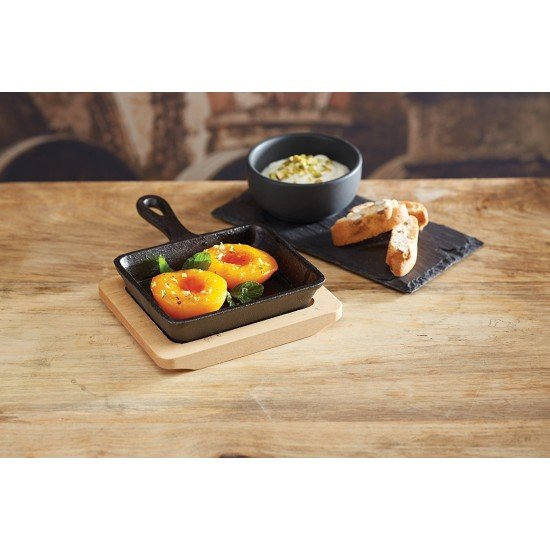
Versatility Across Cooking Techniques
Commercial kitchens require equipment that can perform multiple functions, saving both space and investment costs. Seasoned cast iron excels in this regard, offering remarkable versatility across cooking techniques:
Multi-Method Cooking
A single cast iron piece can seamlessly transition between:
- High-Heat Searing: Perfect for steaks, chops, and seafood
- Oven Roasting: From stovetop to oven without changing vessels
- Slow Braising: Ideal for tenderizing tough cuts of meat
- Shallow Frying: Maintains consistent oil temperatures
- Baking: From cornbread to desserts using specialized pans
This versatility means restaurants can maintain smaller cookware inventories while still executing diverse menu items—a significant advantage for kitchens with limited storage space.
Specialized Applications
Modern kitchens often utilize specialized cast iron pieces for specific cooking applications:
- Grill pans for achieving authentic grill marks without outdoor equipment
- Pizza pans for crispy, evenly cooked crusts
- Sizzler pans for dramatic tableside presentation
- Specialty baking forms for signature bread and dessert offerings
According to Food & Wine Magazine, over 78% of high-end restaurants now feature at least one signature dish prepared or served in cast iron cookware, highlighting its value for menu differentiation.
Cost-Effectiveness and Long-Term Value
Restaurant owners must balance quality with budget considerations. While the initial investment in high-quality cast iron may exceed that of basic aluminum cookware, the long-term economics strongly favor cast iron:
Lifetime Cost Comparison
Consider these financial factors when evaluating commercial cookware:
- Initial Investment: Quality cast iron may cost 2-3× more upfront than budget alternatives
- Replacement Frequency: Standard commercial cookware often requires replacement every 1-2 years
- Lifetime Value: Properly maintained cast iron can last 20+ years in commercial settings
- Total Ownership Cost: Over a 10-year period, cast iron typically costs 60-70% less than replacing budget cookware
The global cast iron cookware market is expected to grow at a CAGR of 5.1% from 2025 to 2029, reflecting increasing recognition of its long-term value proposition.
“We initially balked at the cost of outfitting our kitchen with commercial-grade cast iron. Five years later, we’ve spent nothing on replacements while our competitors have cycled through multiple sets of cheaper cookware.” – James Wilson, Owner, Ironwood Grill
For wholesale purchasers like restaurant supply companies, investing in quality cast iron inventory offers substantial long-term value for their restaurant clients.
Health Benefits and Food Safety Advantages
Today’s diners are increasingly health-conscious, and restaurants must respond with cooking methods that prioritize both nutrition and safety. Seasoned cast iron offers several health advantages:
Natural Iron Fortification
Research from the Journal of Food Science confirms that cooking in cast iron naturally increases the iron content of food—particularly important for acidic foods like tomato-based sauces. For restaurants serving health-conscious clientele, this offers a subtle nutritional benefit without changing recipes.
While the iron enrichment varies by food type, studies show increases of 16-26% for many commonly prepared foods. This natural fortification represents a unique selling point for health-focused establishments.
Chemical-Free Cooking Surface
Unlike non-stick cookware with synthetic coatings that can degrade under commercial use conditions, properly seasoned cast iron is food-safe even at extremely high temperatures. This eliminates concerns about chemical contamination that can occur with damaged non-stick surfaces.
For restaurants focused on clean, natural cooking methods, this represents a significant advantage that aligns with consumer preferences for chemical-free food preparation.
Allergen Management
Properly maintained cast iron develops a sealed cooking surface that, when cleaned correctly, minimizes the risk of allergen cross-contamination—a crucial consideration for restaurants serving guests with food allergies.
According to the Food Allergy Research & Education (FARE), approximately 32 million Americans have food allergies, making allergen management an essential consideration for commercial kitchens.
Chemical-Free Non-Stick Surface
The natural non-stick properties of seasoned cast iron offer significant advantages for commercial kitchens concerned with both performance and health:
How Seasoning Creates Non-Stick Properties
The seasoning process creates a polymerized oil layer that bonds with the cast iron surface. This natural coating provides:
- A smooth cooking surface that prevents food from sticking
- Protection against rust and corrosion
- A barrier that improves with continued use
Unlike synthetic non-stick coatings that degrade over time, properly maintained cast iron seasoning actually improves with use, developing increasingly non-stick properties.
Environmental and Safety Benefits
For restaurants committed to sustainability and safety, seasoned cast iron offers clear advantages:
- No PFOA, PFAS, or other synthetic chemicals in the cooking surface
- No risk of toxic fume release at high temperatures
- Reduced need for cooking oils, supporting health-conscious menu development
- Fully recyclable at end-of-life, unlike cookware with synthetic coatings
According to Environmental Working Group research, PFAS chemicals from damaged non-stick cookware remain environmental contaminants for decades—a concern avoided entirely with natural cast iron cookware.
Proper seasoning techniques ensure that this natural non-stick surface performs reliably even under the demanding conditions of commercial kitchens.
Maintenance and Cleaning in Restaurant Settings
Commercial kitchens must maintain rigorous sanitation standards while maximizing equipment lifespan. Seasoned cast iron requires specific maintenance practices that balance health code compliance with preserving the cookware’s seasoned surface:
Commercial Cleaning Protocols
Unlike home kitchen recommendations that often advise against soap, restaurant cast iron requires thorough cleaning:
- Scrape food residue while the pan is still warm
- Wash with hot water and mild detergent
- Sanitize according to local health department requirements
- Thoroughly dry immediately after washing (critical for preventing rust)
- Apply a thin oil layer before storage
Many commercial kitchens implement a dedicated cleaning station for cast iron to ensure proper handling and maintenance.
Reseasoning Frequency
Commercial cast iron typically requires more frequent reseasoning than home cookware due to rigorous cleaning requirements:
- Light Reseasoning: After each cleaning (thin oil coating)
- Complete Reseasoning: Monthly or when the non-stick properties diminish
According to ServSafe guidelines, properly maintained cast iron cookware can meet all food safety requirements while preserving its cooking properties—but consistent maintenance protocols are essential.
For kitchens with high turnover staff, developing standardized care procedures ensures consistent maintenance regardless of staff changes.
Enhanced Food Presentation and Flavor
Beyond practical durability, seasoned cast iron offers significant advantages for food quality and presentation—factors that directly impact customer satisfaction and restaurant reputation:
Flavor Development
Seasoned cast iron contributes to superior flavor profiles in multiple ways:
- Superior Maillard Reaction: The even, intense heat creates perfect caramelization and browning
- Flavor Retention: The seasoned surface develops subtle flavor enhancements over time
- Consistent Results: Temperature stability ensures reproducible cooking outcomes
These flavor advantages are particularly valuable for signature dishes that define a restaurant’s reputation. The Culinary Institute of America recognizes cast iron as the preferred medium for developing complex flavor profiles in protein-centric dishes.
Presentation Opportunities
For restaurants focused on memorable dining experiences, cast iron offers distinctive presentation advantages:
- Sizzler plates for dramatic tableside service
- Oval serving plates that maintain food temperature throughout the meal
- Rustic presentation vessels that enhance farm-to-table and heritage cuisine concepts
According to a Restaurant Business survey, meals served in cast iron vessels receive 23% higher customer satisfaction ratings, with many guests specifically mentioning the presentation in positive reviews.
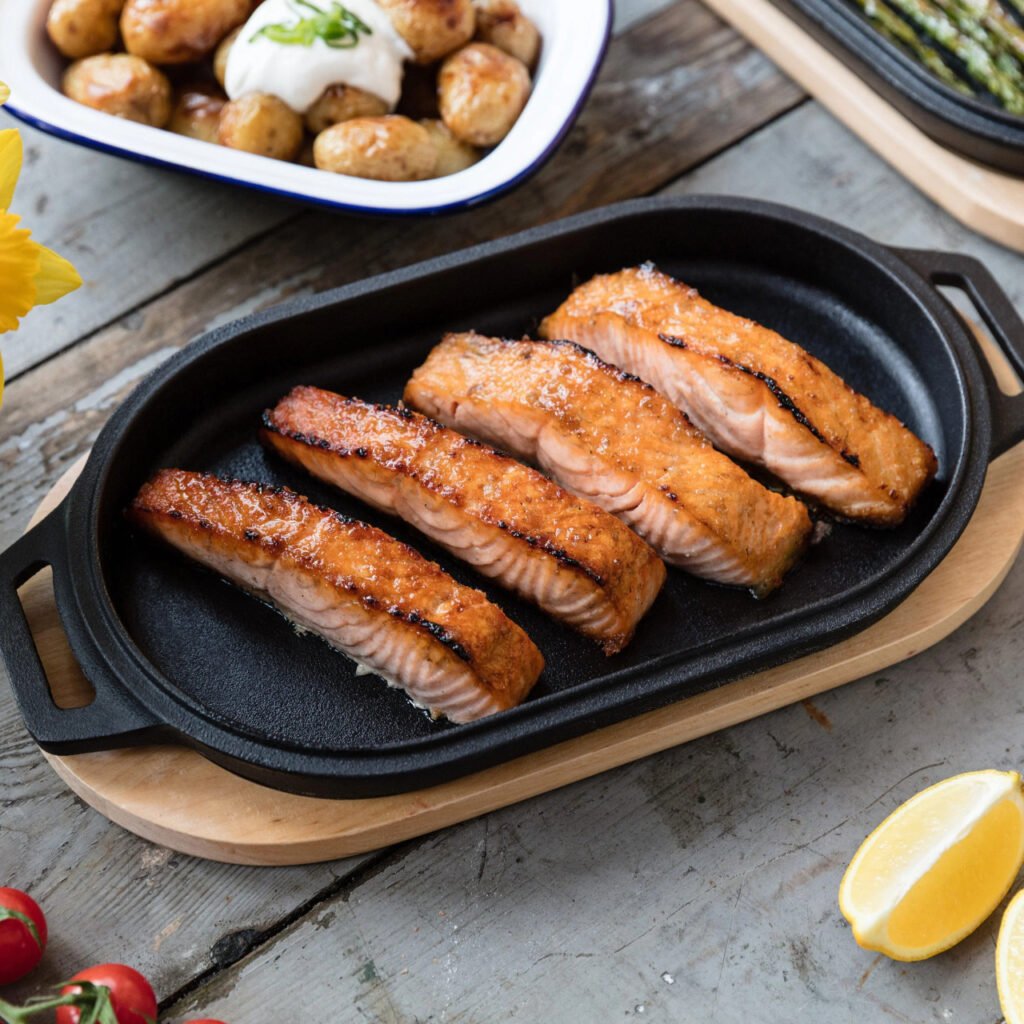

Common Restaurant Practices and Success Stories
Leading restaurants have developed effective protocols for integrating cast iron into their operations, offering valuable insights for foodservice professionals:
Best Practices from Top Establishments
Successful implementation of cast iron in commercial kitchens typically includes:
- Dedicated Storage: Custom racking systems that prevent damage while maximizing accessibility
- Staff Training: Comprehensive onboarding for proper handling and maintenance
- Equipment Rotation: Systems to ensure even wear across multiple pieces
- Specialized Menu Items: Signature dishes specifically designed for cast iron preparation
According to Chef Works industry research, restaurants with comprehensive cast iron training programs report 40% longer cookware lifespans than those without standardized protocols.
Success Stories
“After switching our steak program to cast iron preparation, our customer satisfaction scores increased by 27% and our cooking consistency improved dramatically. The investment paid for itself within three months.” – Executive Chef Sarah Johnson, Prime Steakhouse
Restaurants specializing in heritage cooking concepts have particularly benefited from featuring cast iron in both preparation and presentation:
- Southern Comfort Restaurant Chain: Increased check averages by 18% after introducing tableside cast iron presentations
- Farm-to-Table Concept Restaurants: Reduced kitchen equipment costs by 22% through versatile cast iron implementation
- Hotel Restaurant Groups: Standardized on cast iron from single suppliers to ensure consistent cooking results across multiple properties
These success stories demonstrate that thoughtful implementation of seasoned cast iron cookware delivers both operational and marketing advantages for commercial food operations.
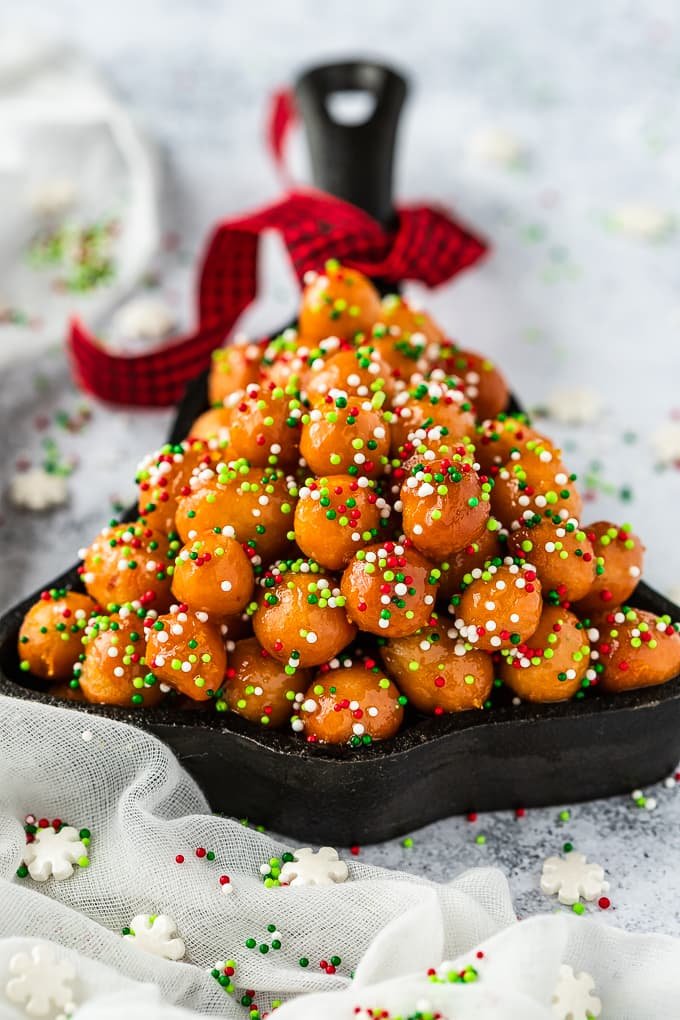
Conclusion: The Competitive Edge of Seasoned Cast Iron
The remarkable growth of the commercial cast iron market—projected to reach $3.07 billion by 2029—reflects the clear advantages this traditional cookware offers to modern restaurants. From superior durability and performance to distinctive presentation opportunities, seasoned cast iron provides multiple competitive edges in today’s challenging foodservice environment.
For restaurant owners, chefs, and foodservice suppliers, investing in quality seasoned cast iron delivers substantial returns through:
- Extended equipment lifespan and reduced replacement costs
- Consistent cooking performance that enhances food quality
- Health and safety advantages that align with modern consumer preferences
- Distinctive presentation opportunities that enhance perceived value
- Versatility that maximizes return on equipment investment
As the restaurant industry continues to evolve, seasoned cast iron remains a cornerstone of commercial kitchen excellence—a rare example of traditional craftsmanship meeting modern performance demands.
Looking for Commercial-Grade Seasoned Cast Iron?
Meiloz offers a comprehensive range of restaurant-quality cast iron cookware designed specifically for commercial applications. With customizable options, wholesale pricing, and products that meet rigorous LFGB and FDA safety standards, we can help equip your foodservice operation for success.
Contact our wholesale team today at [email protected] to discuss your commercial cast iron needs or request a wholesale catalog.
